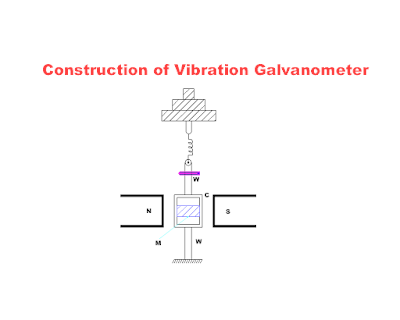Vibration Galvanometer
Vibration galvanometers
are the ac galvanometers used to measure alternating current and electromotive
force (EMF) of various circuits. These galvanometers are also used
as tuned detectors in the power frequency and low audio-frequency ranges.
Vibration galvanometers are designed to use as detectors for the measurement of
frequency from 5Hz to 1000 Hz. These galvanometers are highly sensitive for the
frequency range under 200 Hz. These galvanometers are most commonly used as
null detectors in ac bridges.
Types of Vibration Galvanometer
Vibration galvanometer consists of its one type mentioned below:
Moving Coil type Vibration Galvanometer
Construction of Moving Coil type Galvanometer
Moving Coil type
Vibration
galvanometer consists of a moving coil between the poles of permanent
magnets. The frequency oscillation of the coil is very high. This high
value is achieved by using the control constant of a large range and a moving
system of small inertia. It consists of two suspension wires consists of
a strip of a phosphor-bronze. These two suspensions carry the coil and a
mirror.
Working Principle of Moving Coil type Galvanometer
The beam of light is produced on the mirror M and this beam is
deflected on the scale. When alternating current is passed through the coil, an
alternating torque is produced which acts on a reflected light and the
reflected spot of light is drawn out in the form of a band of light. The
natural frequency of oscillation of a coil overlaps with the supply frequency
due to resonance and the length of the band of light is maximum. The resonance
curve of the vibration galvanometer is sharply peaked due to low damping. Its
deflection is very small when the frequency of applied current differs by a
small amount from its resonance frequency.
Theory of Vibration Galvanometer
If The current passing through the galvanometer is
, then the motion of the coil is:
Where G is the deflection constant and D is damping
constant.
Where J is the Inertia constant.
The phase angle φ has no significance and is eliminated
by squaring and adding in Eq. 2 and 3.
This equation represents the amplitude A of the resulting
oscillation for a sinusoidal alternating current of peak value (Im) flowing
through the moving coil of the galvanometer.




